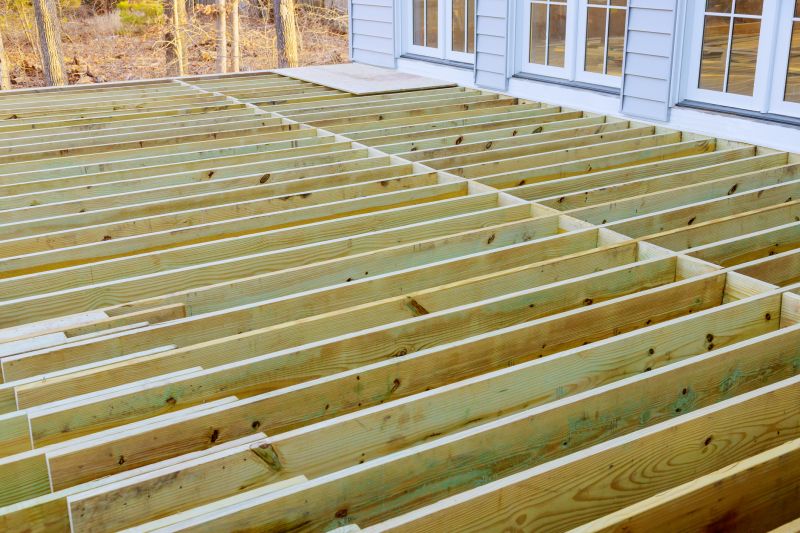Favorite Floor Joist Repair Tools And Materials For Homeowners
A curated selection of popular repair products that make fixing floor joists straightforward and reliable.
 Floor joist repairs are essential for maintaining the structural integrity and safety of a building's flooring system. When joists become damaged or weakened due to rot, pests, or age, addressing these issues promptly can prevent further deterioration and costly repairs down the line. Repair products for floor joists vary widely, from simple reinforcement solutions to comprehensive replacement systems. Understanding the different options available can help homeowners and contractors select the most suitable approach for their specific needs.
Floor joist repairs are essential for maintaining the structural integrity and safety of a building's flooring system. When joists become damaged or weakened due to rot, pests, or age, addressing these issues promptly can prevent further deterioration and costly repairs down the line. Repair products for floor joists vary widely, from simple reinforcement solutions to comprehensive replacement systems. Understanding the different options available can help homeowners and contractors select the most suitable approach for their specific needs.
Types of Products For Floor Joist Repairs
Sistering Joists
Adding new joists alongside existing damaged ones to strengthen the floor structure.
Steel Joist Reinforcements
Heavy-gauge steel plates and brackets designed to reinforce and stabilize joists.
Adjustable Floor Jack Supports
Supports that allow for leveling and lifting sagging or uneven joists during repair.
Joist Hangers and Brackets
Metal hangers and brackets used to secure joists to beams and prevent movement.
Repair Plates and Patches
Metal plates used to patch and reinforce damaged sections of joists.
Wood Epoxy and Fillers
Specialized epoxies and fillers that restore the integrity of rotted or cracked wood.
Underpinning Posts and Supports
Vertical supports used to lift and stabilize sagging floors.
Sealants and Waterproof Coatings
Products that protect joists from moisture and prevent future rot.
Plywood or Subfloor Patches
Replacement panels for sections of damaged subflooring over joists.
Laser Level and Measuring Tools
Tools to ensure precise leveling and alignment during repairs.
Cabling and Ties
Metal cables and ties used to secure joists and prevent movement.
Load Distribution Beams
Additional beams placed to distribute weight evenly across joists.
Fasteners and Anchors
Nails, screws, and anchors suitable for securing repair components.
Sound and Vibration Dampening Materials
Materials that reduce noise and vibration through repaired flooring.
Temporary Support Props
Props used during repair to hold up or stabilize joists temporarily.
Popular Choices
Metal brackets that help secure and reinforce joists in various repair scenarios.
Additional pieces of lumber used to strengthen existing joists.
Heavy-duty steel plates applied to damaged areas for added support.
Supports that can be adjusted to lift or level sagging floors.
Epoxy compounds used to restore rotted or cracked wood in joists.
Vertical supports used to stabilize and lift floors during repair.
Metal hangers for fastening joists securely to beams or ledger boards.
Sealants that help protect joists from moisture intrusion.
Replacement patches for damaged sections of subflooring.
Tools to assist in achieving precise leveling of repaired floors.
Metal ties used to secure and stabilize joist assemblies.
Additional beams to help distribute weight across multiple joists.
Fasteners designed for securing repair components effectively.
Pads that reduce noise and vibration in repaired flooring.
Temporary props used during repair to hold up sagging floors.
Effective repair often begins with assessing the extent of the damage. Minor issues might be resolved with sistering or reinforcing existing joists, while more severe problems could require replacing entire sections. The right products can facilitate these repairs by providing strong, reliable support and ensuring the stability of the flooring system. Proper installation and choosing the appropriate materials are crucial for long-term durability and safety.
In addition to structural products, there are various accessories and supplementary items designed to enhance repair effectiveness. These include brackets, jacks, shims, and sealants that help secure joists and prevent future damage. When selecting repair products, it is important to consider compatibility with existing structures, load-bearing capacity, and ease of installation. Consulting with a professional or thoroughly researching product specifications can help ensure a successful repair outcome.
Key Buying Considerations
- Assess the extent of damage to determine whether reinforcement or replacement is needed.
- Select products that match the size and load capacity of your existing joists.
- Consider the compatibility of repair materials with existing wood and structural components.
- Ensure that repair products are made from durable, high-quality materials for long-term support.
- Evaluate ease of installation, especially if undertaking DIY repairs, and whether professional assistance is recommended.
- Check if the repair system includes all necessary components or if additional parts are required.
- Review the weight distribution and load-bearing specifications to prevent future issues.
- Look for products that provide corrosion resistance, especially in moisture-prone environments.
- Consider the flexibility of repair options for future modifications or expansions.
- Verify that repair products meet relevant building codes and safety standards.
- Determine if the repair method is reversible or adjustable for future adjustments.
- Estimate the total cost, including tools and accessories needed for installation.
- Evaluate the availability of technical support or detailed instructions from manufacturers.
- Assess whether the repair solution minimizes disruption to daily activities during installation.
- Ensure compatibility with existing structural elements, such as beams and subflooring.
